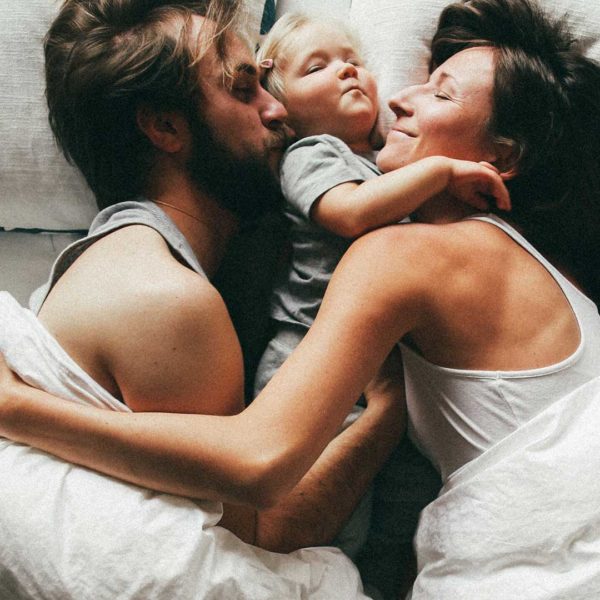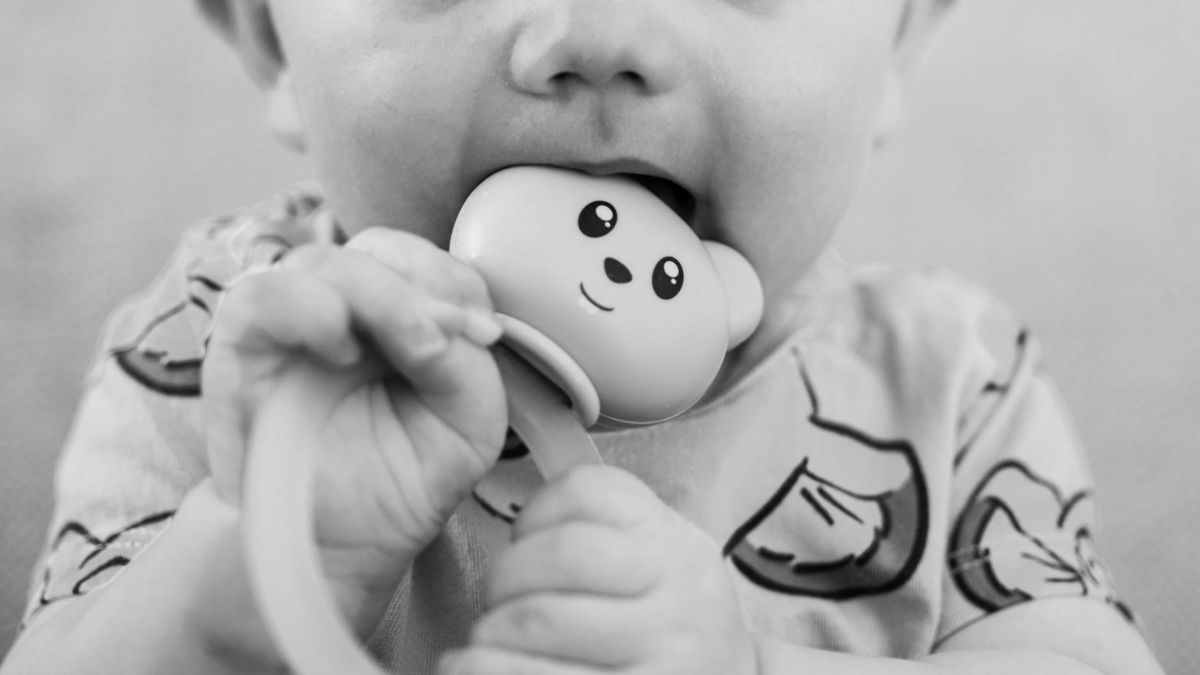Co-Sleeping and Room Sharing – Tips for Sleeping Safely
The term “co-sleeping” is often used alongside “room sharing”. While having your child rooming with you for the first six to 12 months is recommended by the American Academy of Pediatrics (AAP), sleeping with a baby in your bed is another story. The confusion and controversy surrounding co-sleeping and room sharing is just one more parenting hurdle! Read up on the differences between the terms, and how to make sure you’re doing the best thing for your baby and your family:
- Co-sleeping vs room sharing
- Safety measures
- Co-sleeping for naps
- Teaching independence and ending co-sleeping
Co-Sleeping and Room Sharing: What’s the Difference?
The term co-sleeping is often confused with “bed sharing”. Co-sleeping can refer to your baby sharing your room OR bed, so it’s more of an umbrella term. The American Academy of Pediatrics recommends that your baby share a room with their parent for at least six months to a year. They also strongly recommend the baby sleep in their own bed with nothing but a tight sheet, and put to bed on their back. With many parents committed to breastfeeding, a bassinet or cot that sits close to the parents’ bed is a convenient and safe option.
That said, many families consciously choose to have their baby “bed share” with them. In many cultures, this is commonplace.

Tips on Co-Sleeping and Room Sharing
Ideally, make a decision about co-sleeping and room sharing before the baby is born, reserving the option to change your minds without any guilt if it isn’t working for your family.
If you decide to keep your baby with you, consider your sleeping options. You can bedshare, and have the baby sleep in your bed. Or you can roomshare, and have your baby in a crib right next to you, in a bassinet that you can reach over and touch, or in a co-sleeper that can attach to your bed.
Some examples of separate beds for your baby to stay close to you are the BabyBay bedside sleeper, or a travel crib like the Baby Bjorn. One of these could be the happy medium you are looking for!
Understand your motives when you are deciding whether long-term or short-term co-sleeping is right for you and your family. Think carefully about how having a child in bed with you all the time will affect you. Co-sleeping can be a several year commitment, a practice that you may need to continue until your child transitions to her own bed. Since a baby who is room sharing is still sleeping in their own bed, moving them to their own room is less of an issue when the time comes.
What is “Reactive Co-Sleeping”
Many families end up doing what’s called reactive co-sleeping. I obviously don’t hear from all the families that are successfully co-sleeping! That means the baby starts out the night in the bassinet or crib but ends up in the parents bed because that’s the only way they can get him back to sleep. There aren’t many parents who can haven’t been there on occasion!
Another scenario is a family who wanted to co-sleep for a few months and here it is six months or a year later and they can’t figure out how to stop it. Co-sleeping by choice — where both parents knowingly and intentionally sleep with their child every night — is one thing. Co-sleeping by default is another. Reactive co-sleeping is not as safe since you probably don’t have your bed set up safely.
Isn’t Co-Sleeping Controversial?
This isn’t about whether or not to co-sleep. Some cultures sleep with their babies, while the AAP recommends against it. It seems like everything we do these days can be a debate. The purpose of this article is to make sure you understand the terms and the safety measures. Ultimately you’ll do what is safe and works for you and your family, and what makes you all happy and rested!

How Can I Co-Sleep Safely?
Be aware of the safety issues about co-sleeping and talk to your doctor about the most recent safety recommendations to reduce any hazards. Bed-sharing with a baby will require that you do your research about safely preparing your sleeping area and making sure only the parents are involved.
Do not sleep with your baby if you are very overweight, have sleep apnea, or if you have been drinking alcohol or using drugs or medications. You need to be able to respond properly and quickly to your baby’s needs.
Co-sleeping for Naps
It’s unfortunate that this topic has become so controversial and so filled with judgments! It’s not necessary. If a family chooses to safely co-sleep with their baby and everyone is happy and well rested, then GREAT! All babies will eventually have to learn how to put themselves to sleep independently, even in a family bed environment. Naps during the day are also a great way to enjoy your baby without worrying as much about your own sleep. Just be sure you are not falling asleep on an unsafe surface like a couch or chair where a baby could be trapped.
It is easier to do this when your child has language. That way you can communicate that this won’t be a daily occurrence. Once your young child knows how to fall asleep independently, napping with you shouldn’t cause problems.
I don’t recommend reactive co-sleeping and co-sleeping intermittently once parents start sleep coaching or very shortly — within 3 months — after completing sleep coaching. It’s too confusing for the child.
Teaching Your Baby Independence
Some couples that choose to co-sleep but want to foster a degree of sleep independence in their baby and a little early-evening freedom for themselves, put the baby down in her crib at bedtime. Then they move her into the family bed when they get ready for sleep themselves, or the first time she wakes up at night.
It is still important for babies to learn how to put themselves to sleep, even in a family bed environment. Try to put your baby down drowsy but awake at least once a day.
If you choose to co-sleep with your baby short term, plan to transition to the crib between three and six months when an established bedtime routine becomes so essential. During the months that you are co-sleeping, have the baby nap in her crib, co-sleeper, or bassinet (but not swing or bouncer) consistently to make the transition to crib smoother.
How Should I End Co-Sleeping?
When you do move a child out of your bed, you must be completely consistent. Consider spending a week or two getting her accustomed to napping in her own crib or bed during the day, before you make the nighttime transition.
Co-sleeping and room sharing are both ways that people keep their baby close in the early months. As long as you practice safe sleep protocols, and teach independence along the way, what’s important is that everyone is sleeping.




